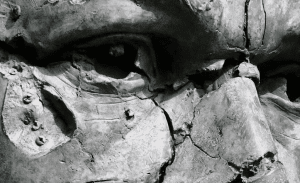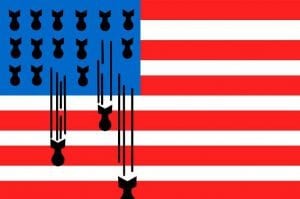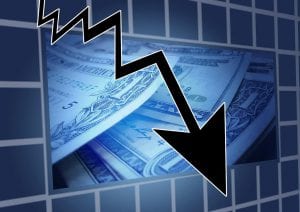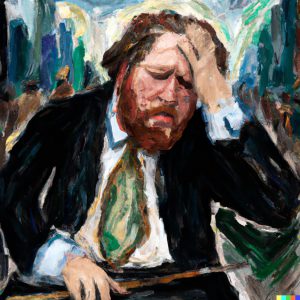List at Least One Factor That Contributed to the Stock Market Crash and the Great Depression Era
March 30, 2024
Intro: The Roaring Twenties: A Prelude to the Storm
The 1920s, often called the “Roaring Twenties,” was a period of unprecedented economic growth and prosperity in the United States. However, beneath the glitz and glamour, several underlying factors were silently brewing, setting the stage for the impending stock market crash and the Great Depression. As the wise Niccolò Machiavelli observed nearly 500 years ago, “The promise given was a necessity of the past: the word broken is a necessity of the present.” This astute observation holds when examining the events leading up to the crash.
One of the most significant factors that contributed to the stock market crash and the Great Depression was the excessive speculation in the stock market, fueled by easy credit and speculative fervour. During the 1920s, the stock market experienced a remarkable bull run, with investors from all walks of life pouring their money into stocks, often borrowing heavily. This speculative frenzy was driven by the belief that the market would continue to rise indefinitely, a sentiment echoed by Irving Fisher, a renowned economist of the time, who famously declared just days before the crash, “Stock prices have reached what looks like a permanently high plateau.”
Easy Credit and Margin Trading: A Recipe for Disaster
In response to the title “List at least one factor that contributed to the Stock Market Crash and the Great Depression”, we will begin with the most destructive and significant factor that ignited this global disaster. It’s akin to the Titanic hitting the iceberg. Human stupidity, an ever-present force, never ceases to amaze and astound, even in the face of catastrophic events that have left an indelible mark on history.
By commencing our exploration with this pivotal factor, we delve into the depths of a calamity that shook the foundations of the global financial system. Just as the Titanic’s collision with the iceberg set in motion a series of events that led to its tragic demise, this factor served as the catalyst for an explosive chain reaction. These unleashing consequences reverberated across the world.
The excessive speculation in the stock market was fueled by the availability of easy credit and the widespread practice of margin trading. Banks and brokers readily extended loans to investors, allowing them to purchase stocks with only a tiny percentage of the total cost upfront. This leverage amplified potential gains but also magnified losses when the market turned. As the legendary trader Jesse Livermore observed, “There is nothing new in Wall Street. There can’t be because speculation is as old as the hills. Whatever happens in the stock market today has happened before and will happen again.”
The excessive use of margin trading created a precarious situation where a slight decline in stock prices could trigger a cascade of margin calls, forcing investors to sell their holdings at a loss to cover their loans. This vicious cycle of forced selling further drove down stock prices, contributing to the market’s eventual collapse. According to data from the Federal Reserve, margin debt reached a staggering $8.5 billion by the end of the 1920s, equivalent to nearly 10% of the total market capitalization.
The Wisdom of Contrarian Investing
While most investors were caught up in the speculative frenzy, a few astute individuals recognized the unsustainable nature of the market’s rise. One such investor was Bernard Baruch, a prominent financier and advisor to presidents. Baruch adhered to the principles of contrarian investing, a strategy that goes against the prevailing market sentiment. He famously stated, “The main purpose of the stock market is to make fools of as many men as possible.”
Baruch began gradually selling off his holdings as the market peaked, recognizing that excessive speculation and overvaluation could not be sustained indefinitely. His contrarian approach allowed him to sidestep the devastating losses that many investors suffered during the crash. Baruch’s timely decision to sell his stocks and invest in gold and bonds helped him emerge from the crisis relatively unscathed.
The Role of Mass Psychology
The stock market crash and the subsequent Great Depression highlight the decisive role that mass psychology plays in financial markets. As the renowned economist John Maynard Keynes noted, “The markets can remain irrational longer than you can remain solvent.” The collective belief in the market’s invincibility and the fear of missing out on potential gains drove investors to make irrational decisions, disregarding fundamental economic principles.
The concept of herd mentality, where individuals follow the crowd’s actions without independent thought or analysis, was evident during the build-up to the crash. Investors blindly followed the lead of others, assuming that the market’s collective wisdom must be correct. This herd mentality amplified the speculative bubble and ultimately contributed to its bursting.
Technical Analysis: Identifying the Warning Signs
While fundamental factors played a significant role in the stock market crash, technical analysis also provided valuable insights into the impending downturn. Technical analysis involves studying past price and volume data to identify patterns and trends indicating future market movements.
One of the most prominent technical indicators that foreshadowed the crash was the widening divergence between the Dow Jones Industrial Average (DJIA) and the Dow Jones Transportation Average (DJTA). The DJIA, which consists of 30 large industrial companies, continued to rise in the months leading up to the crash, while the DJTA, which tracks the performance of 20 transportation stocks, began to decline. This divergence signalled that the market’s underlying fundamentals were weakening despite the apparent strength of the DJIA.
The Aftermath and Lessons Learned
The stock market crash of 1929 and the ensuing Great Depression had far-reaching consequences, both economically and socially. Millions of Americans lost their jobs, homes, and savings, and the country plunged into prolonged economic hardship. The experience was a stark reminder of the dangers of unchecked speculation and the importance of sound financial practices.
In the wake of the crisis, significant reforms were implemented to prevent similar catastrophes in the future. The Securities and Exchange Commission (SEC) was established to regulate the stock market and protect investors from fraudulent practices. The Glass-Steagall Act was passed, separating commercial banking from investment banking to limit the risks associated with speculative activities.
Conclusion to List at Least One Factor That Contributed to the Stock Market Crash and the Great Depression Era.
The stock market crash of 1929 and the Great Depression served as a cautionary tale of the dangers of excessive speculation, easy credit, and the power of mass psychology in financial markets. By examining the crucial factors that contributed to this devastating event, we can gain valuable insights into the importance of sound investing principles, the wisdom of contrarian thinking, and the need for proper regulation and oversight.
As we navigate the complexities of modern financial markets, it is essential to remember the lessons of the past and approach investing with a long-term, disciplined mindset. By understanding the forces that shape market movements and applying the insights of great thinkers and successful traders, we can strive to make informed decisions and build lasting financial security.
In the words of the legendary investor Warren Buffett, “The stock market is a device for transferring money from the impatient to the patient.” By embracing the wisdom of the past and maintaining a patient, rational approach to investing, we can weather the storms of market volatility and emerge stronger on the other side.
Overview: List at Least One Factor That Contributed to the Stock Market Crash and the Great Depression
**Excessive Speculation and Overinflated Stock Prices**: In the years preceding the crash, stock prices skyrocketed to unprecedented levels, fueled by a speculative frenzy and the widespread belief that the market would continue rising indefinitely. Both experienced and novice investors poured their savings into the stock market, often borrowing heavily to purchase shares on margin (using borrowed money).
This rampant speculation and artificially inflated stock valuations created an unsustainable economic bubble. When the bubble eventually burst with the stock market crash of 1929, it triggered a chain reaction of financial turmoil that contributed significantly to the onset of the Great Depression.
While excessive speculation was a major factor, other elements, such as weak financial regulations, easy credit policies, overproduction, and income inequality, also played crucial roles in setting the stage for the economic catastrophe that followed the crash. Understanding these factors provides valuable insights into the importance of responsible investing practices, sound economic policies, and robust financial oversight.
Words that Resonate: Memorable Articles

Define Fiat Money in Economics: The USD is A prime example

United States Sanctions on Russia: Pressuring Europe to Comply

Financial Instability: 40% of Americans Can’t Handle $400 Emergencies

Philippines Vacation Spots: Unveiling the Treasures of Paradise

Red Alert: Retirement crisis in America

How Does Oil Pulling Work?

Education trends: The Transformative Power of Education

The Exportation Of The American Life Style

Mob Rule Game: Conquer Stock Market Mayhem for Investing Success

SOS: Distress Signals from the American Economy in Trouble
Alarming Surge in Sexual Violence in Germany

Embracing Investing Psychology: Profiting from Negativity

Corn-Eating Hamster Cannibals: Unveiling the Mystery

Food for Thought Meaning: Exploring Intellectual Depths

Fragile Foundations: Central Banks Assault on Strong Currency
Take Control of Your Future: The Empowering Investing for Dummies PDF Handbook



